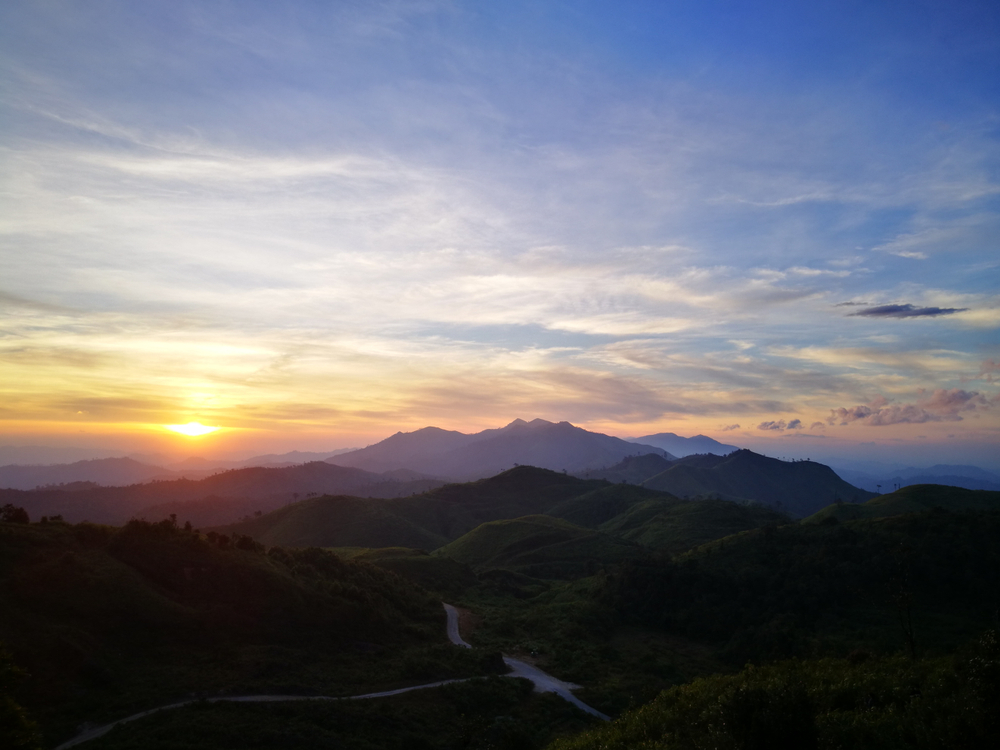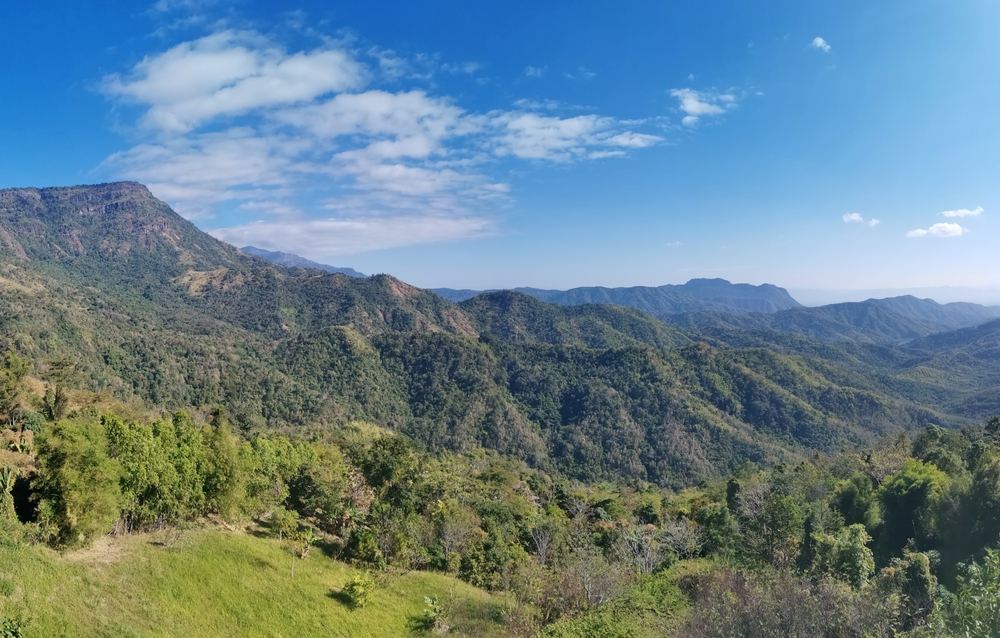Geography: Mountains
The diverse landscape of Thailand includes mountain ranges that have left an enduring mark on its culture, history, and identity. Some of these summits also serve as crucial water sources, giving rise to rivers that flow downstream to nurture communities, agriculture, and livelihoods. Historically, these peaks have offered strategic advantages as natural fortresses, providing protection to civilizations and communities vying for dominance in the region. These mountains have played a role in shaping trade routes and influencing patterns of human migration, while also evolving into symbols of strength, endurance, and resilience within Thailand's folklore, literature, and art.
The table below offers information about Thailand's major mountain peaks.
|
Highest Peaks |
Elevation |
Mountain Range |
Type of Range |
|
Doi Inthanon |
2,565 m (8,415 ft) |
Shan Hills |
Fold |
|
Doi Pha Hom Pok |
2,285 m (7,497 ft) |
Shan Hills |
Fold |
|
Doi Chiang Dao |
2,175 m (7,136 ft) |
Shan Hills |
Fold |
|
Khao Kacheu La |
2,152 m (7,060 ft) |
N/A |
N/A |
|
Phu Soi Dao |
2,120 m (6,960 ft) |
Luang Prabang Range |
Fold |
|
Phou Khe |
2,079 m (6,821 ft) |
Luang Prabang Range |
Fold |
|
Phu Lo |
2,077 m (6,814 ft) |
Luang Prabang Range |
Fold |
|
Doi Mae Tho |
2,031 m (6,663 ft) |
Khun Tan Range |
Fold |
|
Doi Mae Ya |
2,005 m (6,578 ft) |
Shan Hills |
Fold |
|
Doi Phong Sa Yan |
2,004 m (6,575 ft) |
Shan Hills |
Fold |
Copyright © 1993—2025 World Trade Press. All rights reserved.

 Thailand
Thailand 
